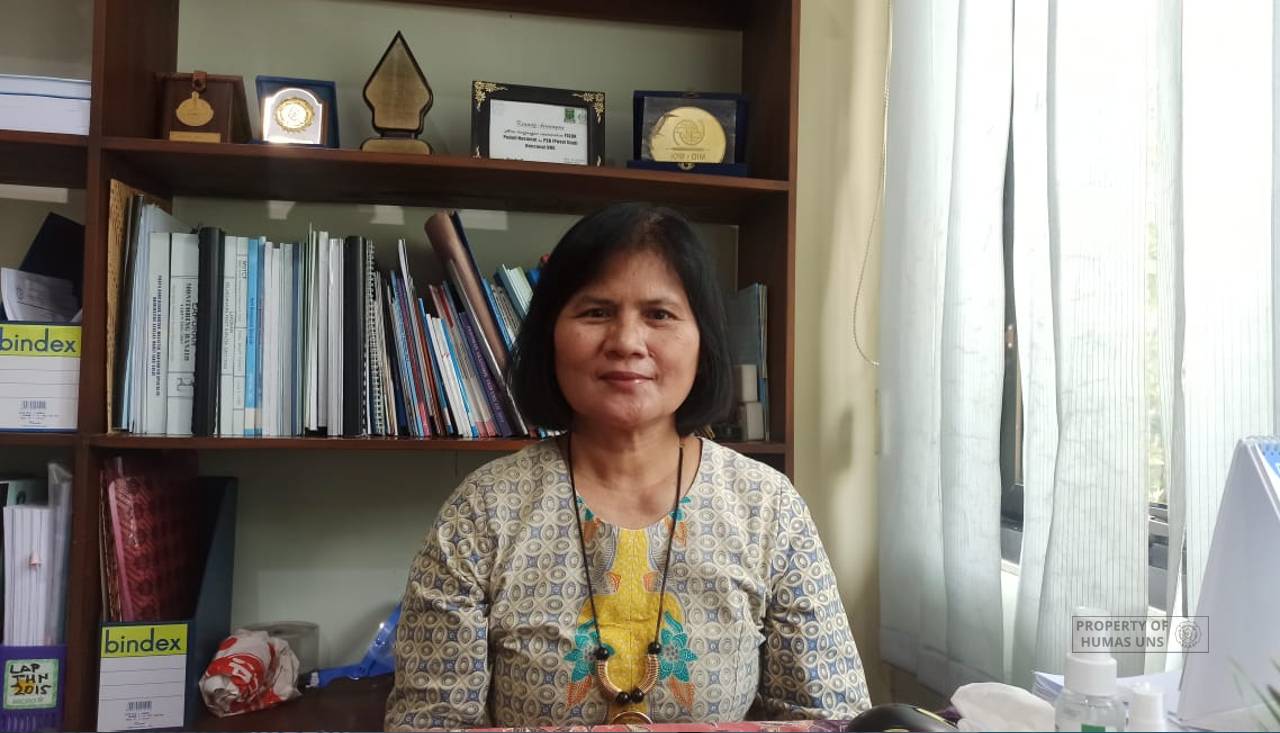UNS — The expert for disaster study and the Chief of Disaster Study Center (PSB) Institute for Research and Community Services (LPPM) Universitas Sebelas Maret (UNS) Surakarta, Prof. Dr. Chatarina Muryani, M.Si., reminded the community of the potential of hydrometeorology disaster because Indonesia will enter the rainy season on December.
A hydrometeorology disaster is a disaster caused by meteorological parameters such as temperature, precipitation, wind speed, and humidity that have the potential to trigger landslides, flooding, and waterspout disasters, among others. Last year Indonesia observed an increase in the number of hydrometeorology disasters up to eight times from 2005, suggesting a significant increase in hydrometeorology disasters in Indonesia.
Many factors take a role in the increasing number of hydrometeorology disasters, such as climate change and environmental damage that exacerbate the hydrometeorology disasters.
“Landslides and floods are hydrometeorology disasters. It is often occurring especially due to the human activities such as loggings, unperceptive land management of the hillsides and above normal rainfall intensity like we are experiencing now,” Prof. Chatarina explained.
The environmental damage that worsens hydrometeorological disasters could be observed from the increased intensity of flooding in Indonesia. The increasing precipitation combined with the lack of plants absorbing water in the upstream areas turned rainwater into surface water that inundated the downstream areas.
Prof. Chatarina asked the community to be more aware of their surrounding environment by not causing damage and exploiting the natural resources over their capacity. If the community and government are committed to protecting the environment, hydrometeorology disasters could be prevented.
“With the decrease in forests and unstable lands on the hillsides, the potential of landslides increases. The low absorbing ability of lands on the upstream area makes most of the rainwater become surface water and causes floods in the downstream area. It is a natural law, the upstream has landslides, and the downstream has floods. If human does not care about their environment, that is what will happen,” the Professor in Geography Education UNS explained.
People in disaster-prone areas are expected to be ready and follow the government’s instruction through the Board of Meteorology, Climatology, and Geophysics on the information of disaster potential. The government is also expected to provide more extensive socialization on hydrometeorology disaster awareness and mitigation. Humas UNS
Reporter: Ida Fitriyah
Editor: Dwi Hastuti

